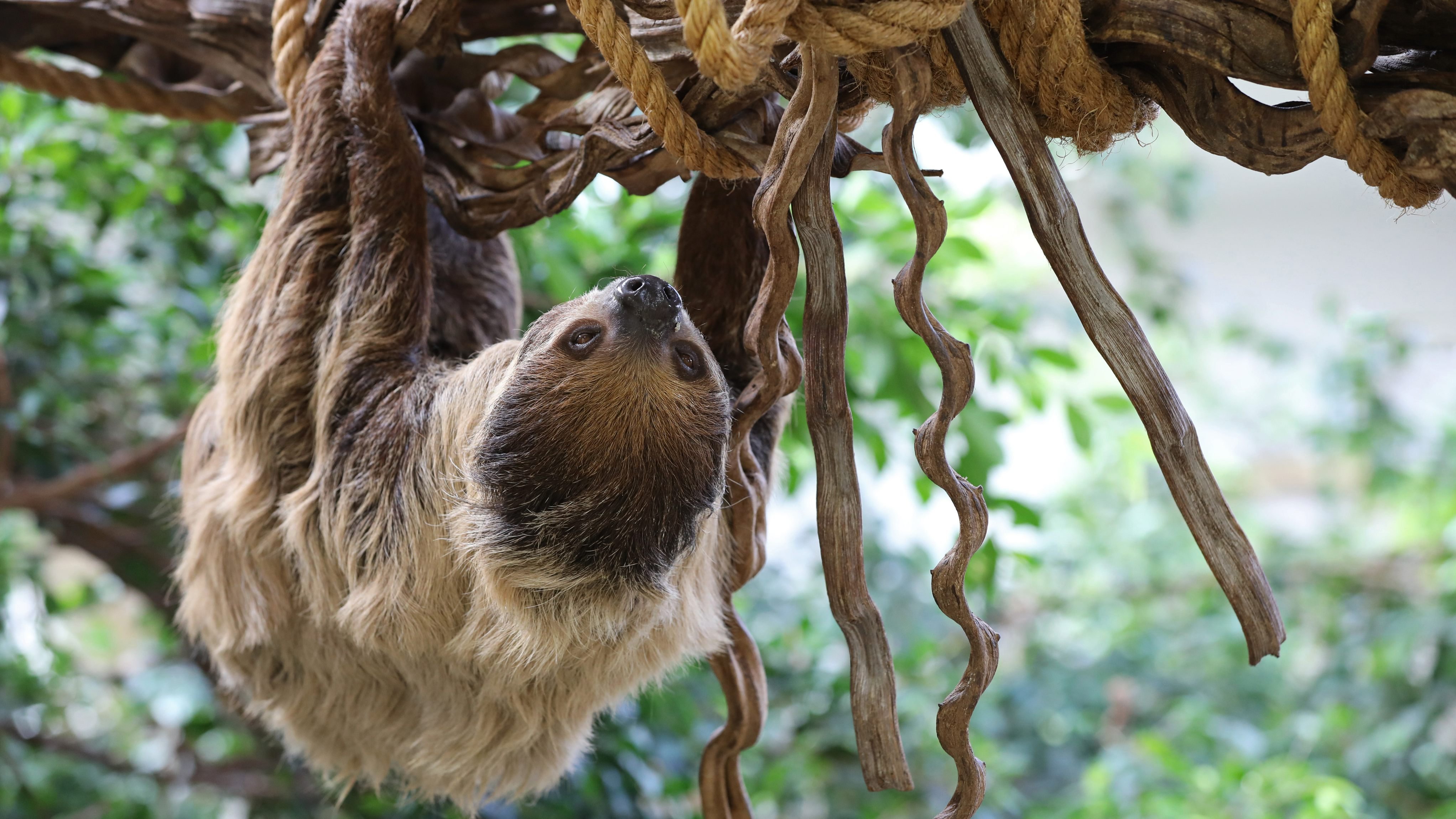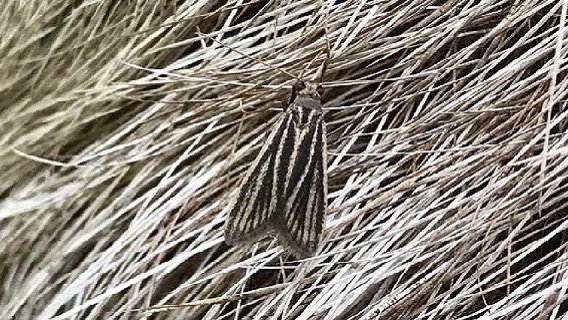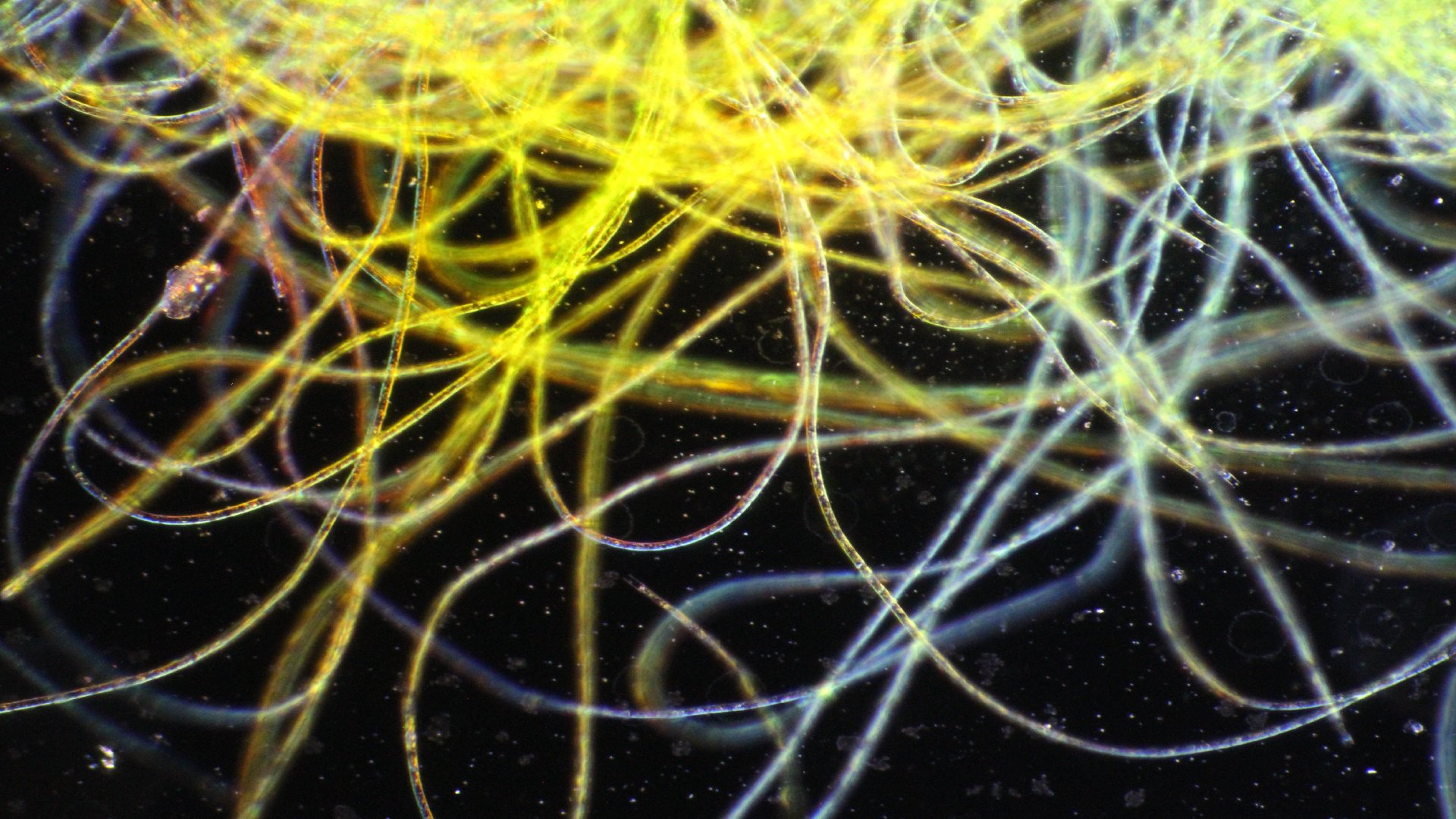Ulothrix zonata is responsible for the green camouflage of sloths. Together with other green algae, it is part of a complex ecosystem: the sloth's fur.
Ulothrix zonata is responsible for the green camouflage of sloths. Together with other green algae, it is part of a complex ecosystem: the sloth's fur.
Ulothrix zonata is a filamentous green alga that consists of square cells. These little cubes stick together. On the outer end they have a special cell with which they can ‘hold on to’ a surface. This enables them to stick to rocks or the bottom of a river. This green alga lives at places where a lot of water is present. This can be either fresh or salty water.
But this alga also lives in the hair of sloths, together with lots of other different green algae. These hairs have deep grooves, which absorb water, and are therefore the perfect living environment for algae. In return, the algae provide the sloth with camouflage.

The two toed sloth lives high up in the trees of the tropical rainforest in South America. Their diet mostly consists of leaves which are hard to digest. That's why sloths are focused on saving energy. Once a week the sloth comes down from the trees to defecate on the ground.
A reason for this is the extraordinary ecosystem in the fur of the sloth, which contains a large variety of insects, fungi, bacteria, and algae. Take for example snout moths. By coming down from the trees, the snout moths can easily find the faeces in which they lay their eggs.
Teamwork
As compensation, the snout moth stimulates the growth of algae in the fur, by producing nitrogen. This is one of the nutrients that algae use to grow. The hairs have special groves which can hold water. Various green algae, like Trichophilus welckeri, but also Ulothrix zonata live in these grooves. The fur of the sloths turns green because of this. This works well as camouflage. But this is not the only thing. The different algae are also an important supplement in their diet.

Not green in ARTIS Amsterdam Royal Zoo
The two toed sloth is less of a specialist compared to the three toed sloth. This last one only eats leaves, but the first also eats fruits and animal products. He can defecate from the tree without consequences for his algae diet.
The two toed sloth in ARTIS does not have a green fur, because algae like a humid environment and it does not rain in the enclosure. In nature they are not always green either, but change with the season. When it rains often, they are greener.

